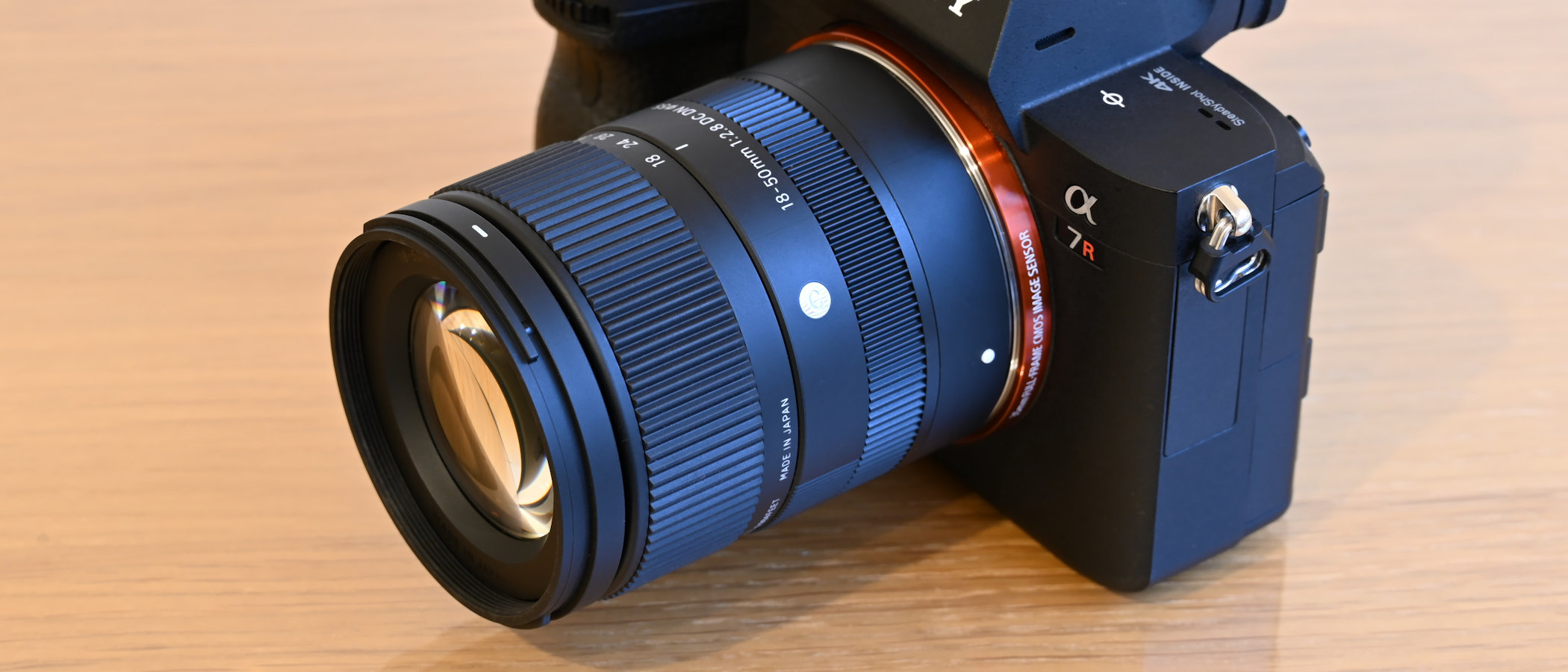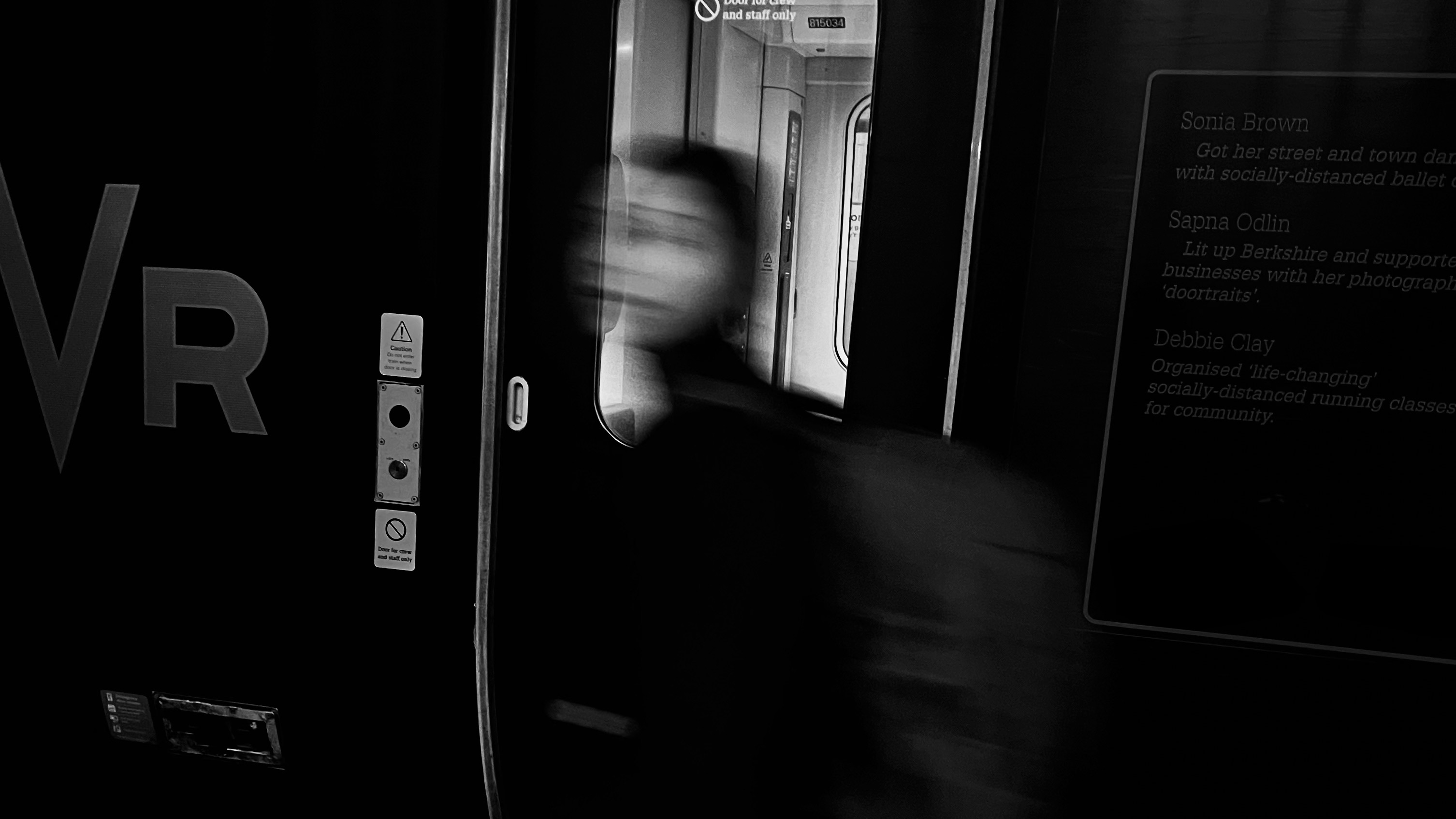Digital Camera World Verdict
A big, chunky f/2.8 standard zoom lens would look and feel out of place on a dinky little Sony, Leica, Canon or Fujifilm APS-C format system body. Sigma solves the problem by shoehorning a useful 27-75mm effective zoom range with a fast and constant f/2.8 aperture into a remarkably compact yet well-built, weather-resistant lens. It has super-fast and virtually silent autofocus, and delivers impressive image quality. At just a quarter of the weight and price of many f/2.8 standard zooms, it’s a great buy. All in all, this Sigma is a little lens that really does punch well above its weight.
Pros
- +
Constant f/2.8 aperture
- +
Small and lightweight
- +
Impressive image quality
Cons
- -
No optical stabilizer
- -
Controls are basic
Why you can trust Digital Camera World
The Sigma 18-50mm F2.8 DC DN | C bucks a trend. Think constant-aperture f/2.8 ‘trinity’ zooms and you’re probably thinking chunky, heavyweight lenses that are less than a perfect fit on slimline mirrorless bodies. And rightly so, given recent and back-catalogue contenders. This Sigma is an altogether more compact proposition, designed for Sony E and Leica L mount APS-C format cameras. It’s amazingly small and light for an f/2.8 zoom, even by APS-C standards, measuring a mere 65x75mm and weighing in at just 290g. Even the price tag is refreshingly lightweight.
Specifications
Mount: Sony E, Leica L, Fujifilm X, Canon RF-S
Full-frame: No
Autofocus: Yes
Stabilization: No
Lens construction: 13 elements in 10 groups
Angle of view: 76.5-31.7 degrees
Diaphragm blades: 7
Minimum aperture: f/22
Minimum focusing distance: 0.12m (W) 0.3m (T)
Maximum magnification ratio: 0.36x (W) 0.2x (T)
Filter size: 55mm
Dimensions: 65x75mm
Weight: 290g
Key features
Top of the list of desirable features is the fast and constant f/2.8 aperture. Compared with most variable-aperture standard zooms, this enables quick shutter speeds under low lighting conditions, and a relatively tight depth of field for isolating the main subject within a scene. The latter is especially true at short focus distances and the Sigma does well here, with a minimum focus distance of just 0.12m at the shortest zoom setting, stretching to a still close 0.3m at the telephoto end.
The optical design incorporates three high-precision glass-molded aspherical elements, which help with the downsizing of this ‘Contemporary’ lens as well as boosting sharpness and reducing aberrations. There’s also an SLD (Special Low Dispersion) element to reduce color fringing. Sigma’s conventional Super Multi-layer Coating is applied to minimize ghosting and flare.
Autofocus is based on a linear stepping motor, which snaps quickly into position as well as being able to track rapidly moving subjects. It also enables smooth focus transitions when shooting video. The only real downside is that the lens doesn’t feature an optical image stabilizer, and most of the cameras that it’s designed for don’t feature in-body stabilization.
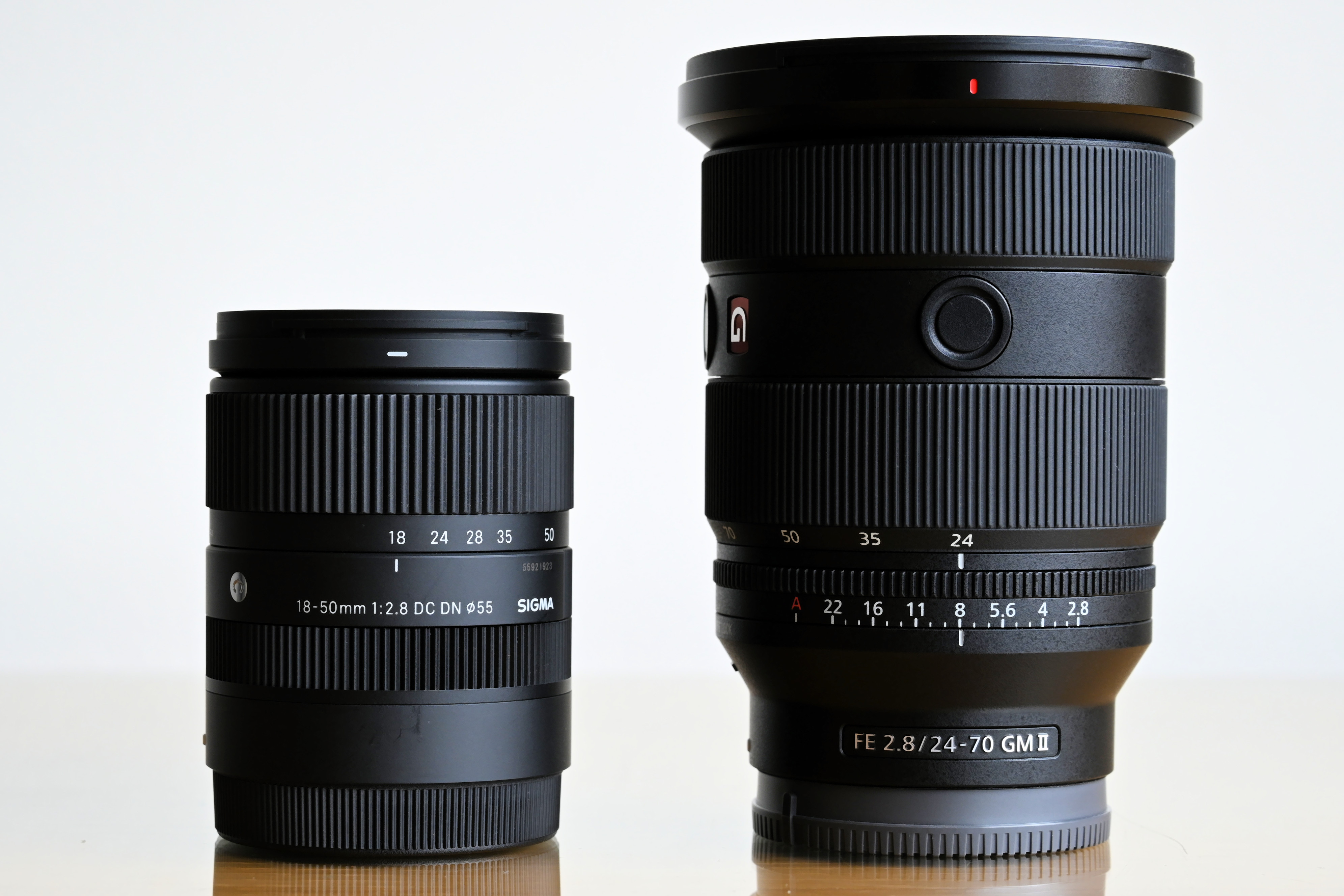
Build and handling
Build quality is very good with extensive use of Sigma’s TSC (Thermally Stable Composite) material, which keeps tolerances tight during temperature changes. Weather-seals are also included to ensure good dust/moisture-resistance.
The main handling attraction is the compact, lightweight nature of the design. Further bonuses are that the zoom ring and focus rings both operate with a smooth and precise action. However, in keeping with the downsized design, there’s no auto/manual focus switch nor any customizable function buttons.
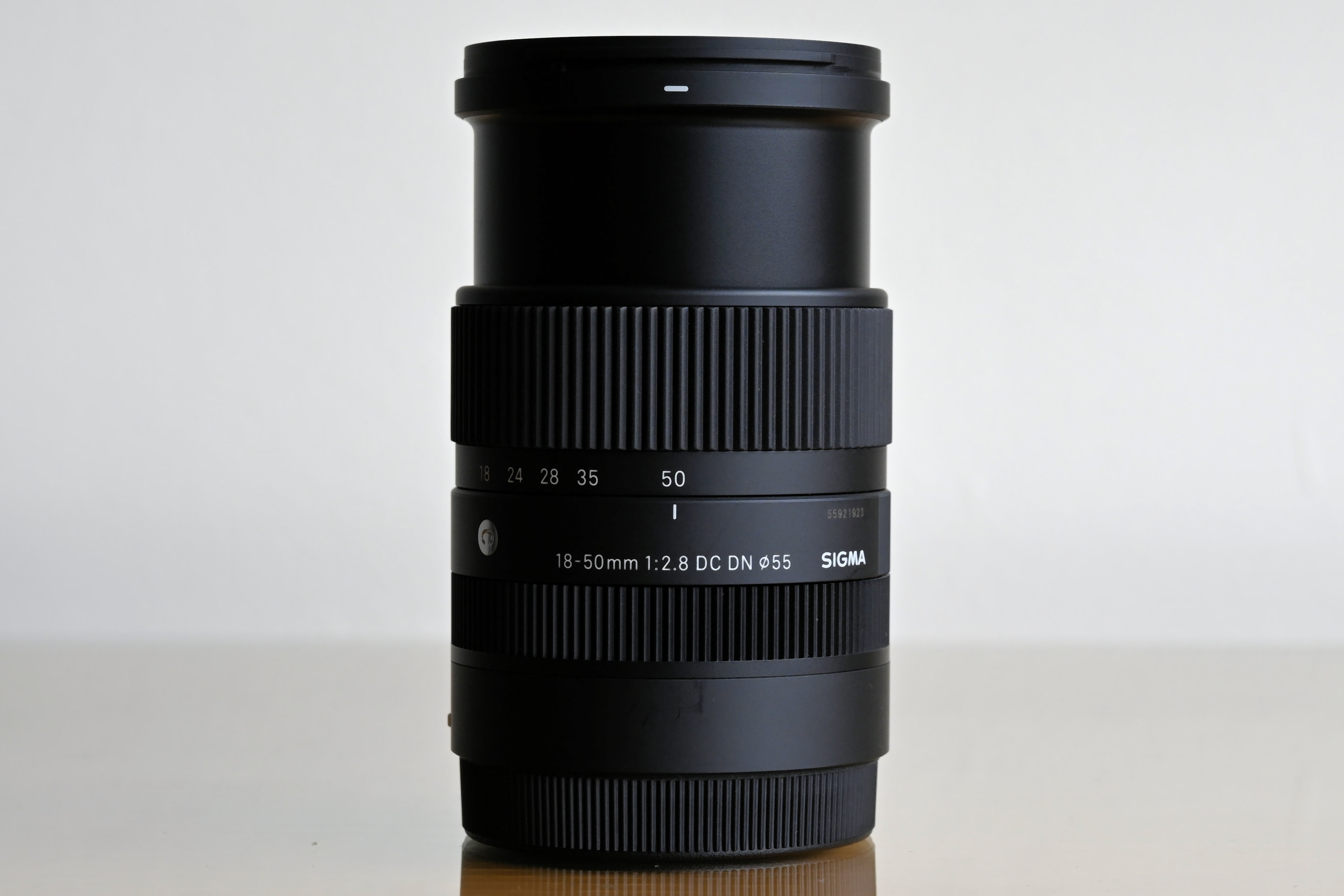
Performance
As well as being rapid and virtually silent, the autofocus system proved consistently accurate throughout our testing. Sharpness is generally excellent across the entire image frame, although edge-sharpness drops off a little at longer zoom settings. At the widest aperture of f/2.8, bokeh is pleasantly smooth in defocused areas, and longitudinal/axial chromatic aberration or ‘bokeh fringing’ is very minimal.
There’s virtually no lateral chromatic aberration, even out to the extreme edges and corners of the frame, but performance is less impressive when it comes to distortions. As with many recent lenses designed for mirrorless cameras, the Sigma relies heavily on in-camera corrections which can also be applied when processing raw files. Overall, however, performance is very impressive.
Sample images
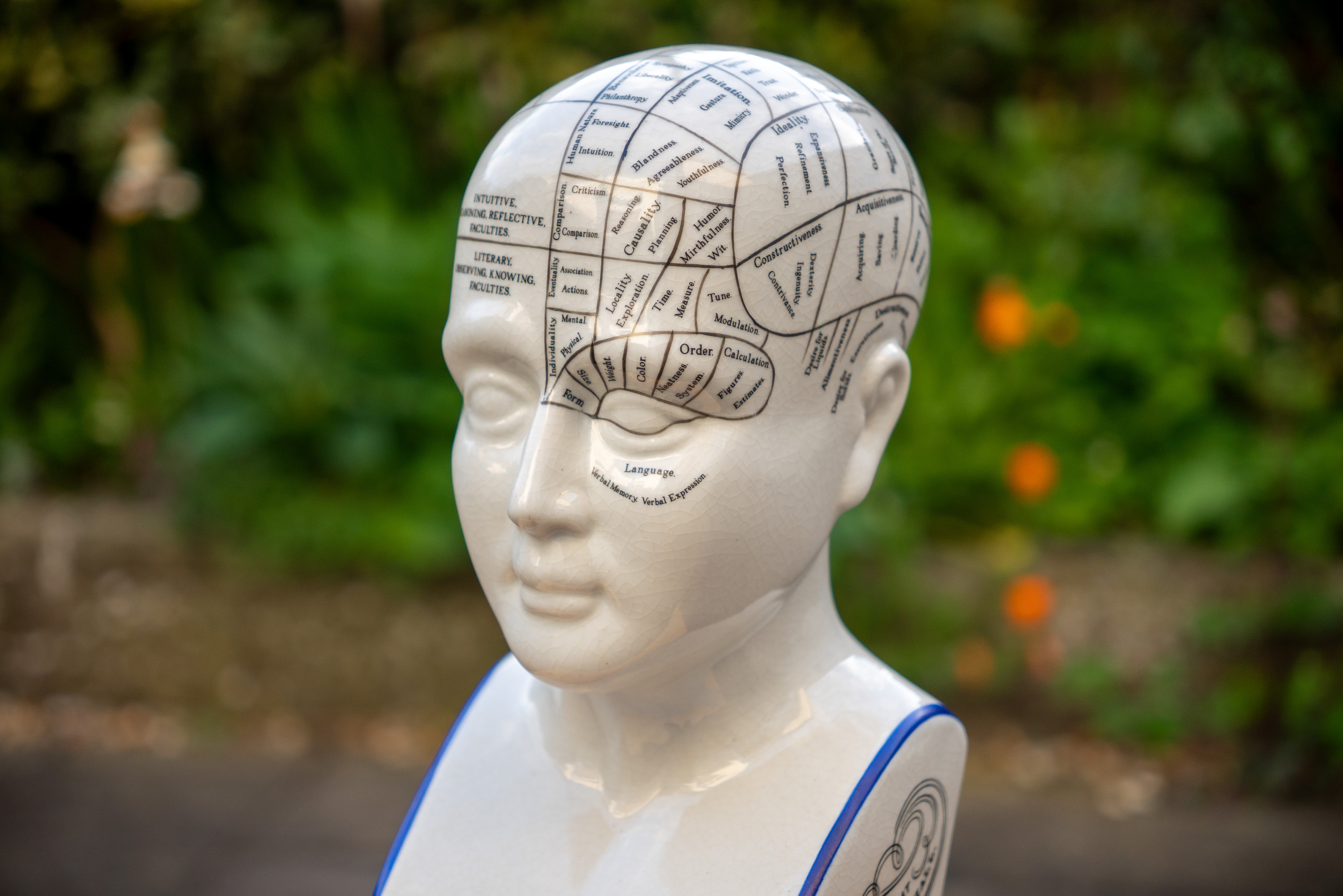
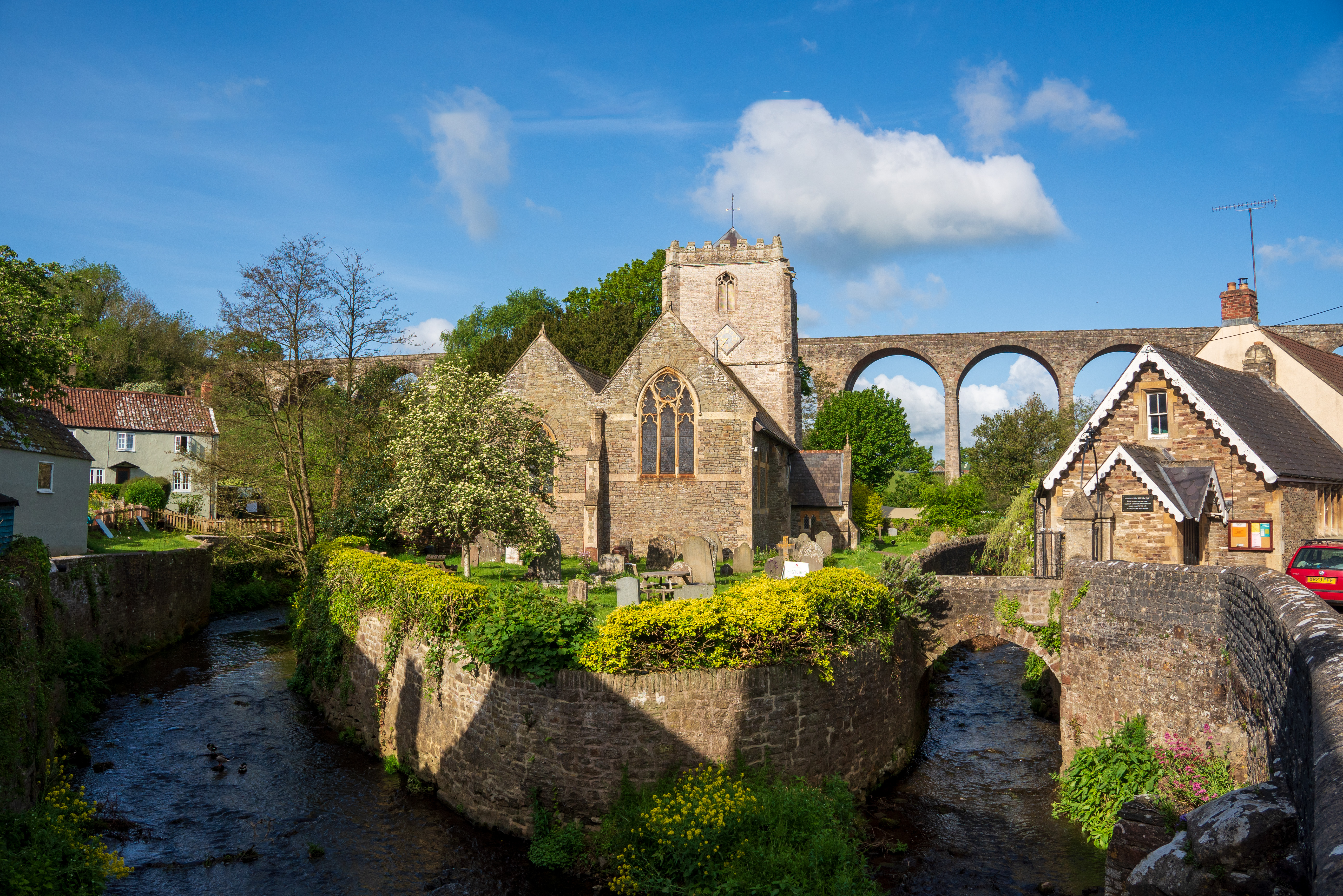

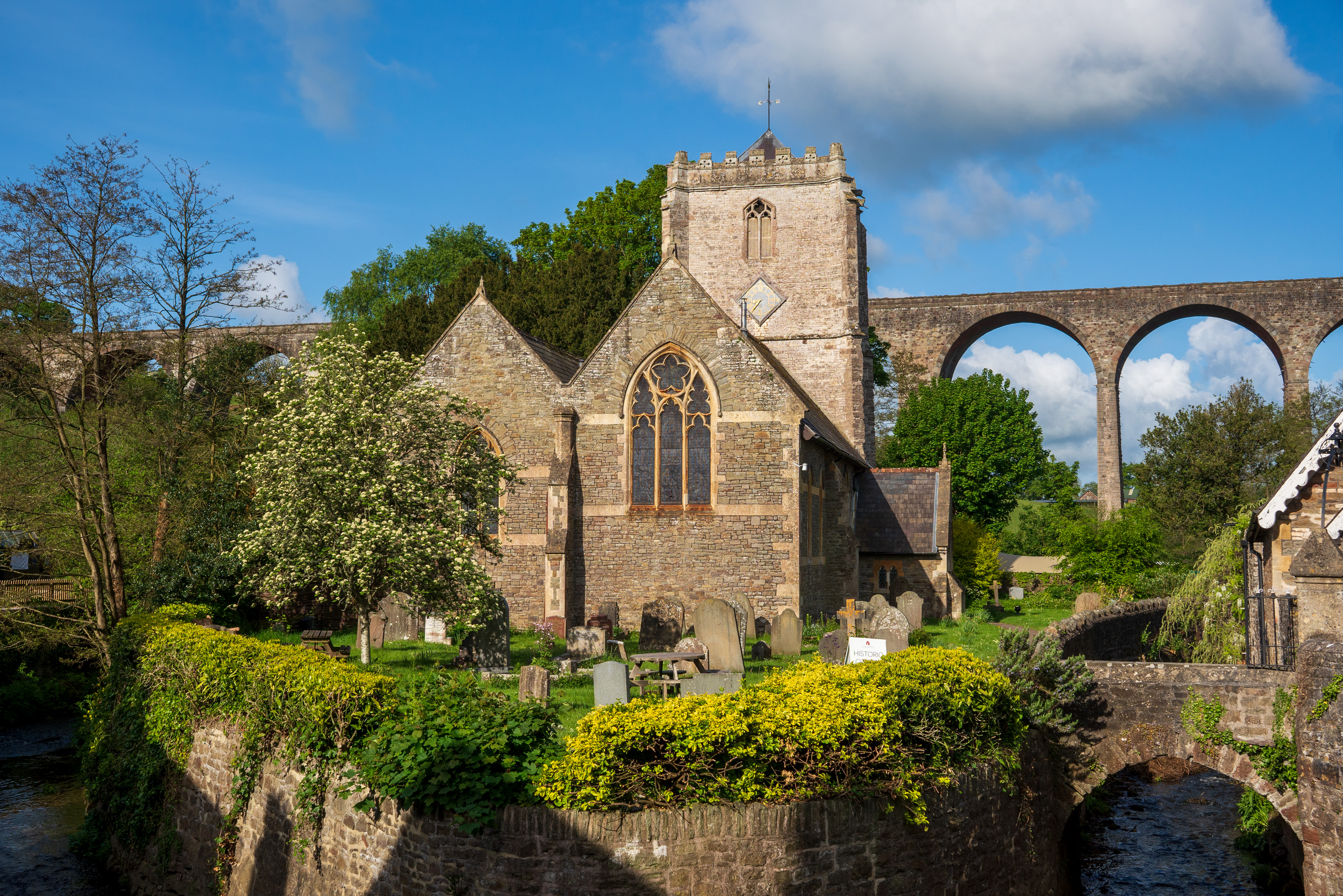


Lab results
We run a range of lab tests under controlled conditions, using the Imatest Master testing suite. Photos of test charts are taken across the range of apertures and zooms (where available), then analyzed for sharpness, distortion and chromatic aberrations.
We use Imatest SFR (spatial frequency response) charts and analysis software to plot lens resolution at the center of the image frame, corners and mid-point distances, across the range of aperture settings and, with zoom lenses, at four different focal lengths. The tests also measure distortion and color fringing (chromatic aberration).
Sharpness:
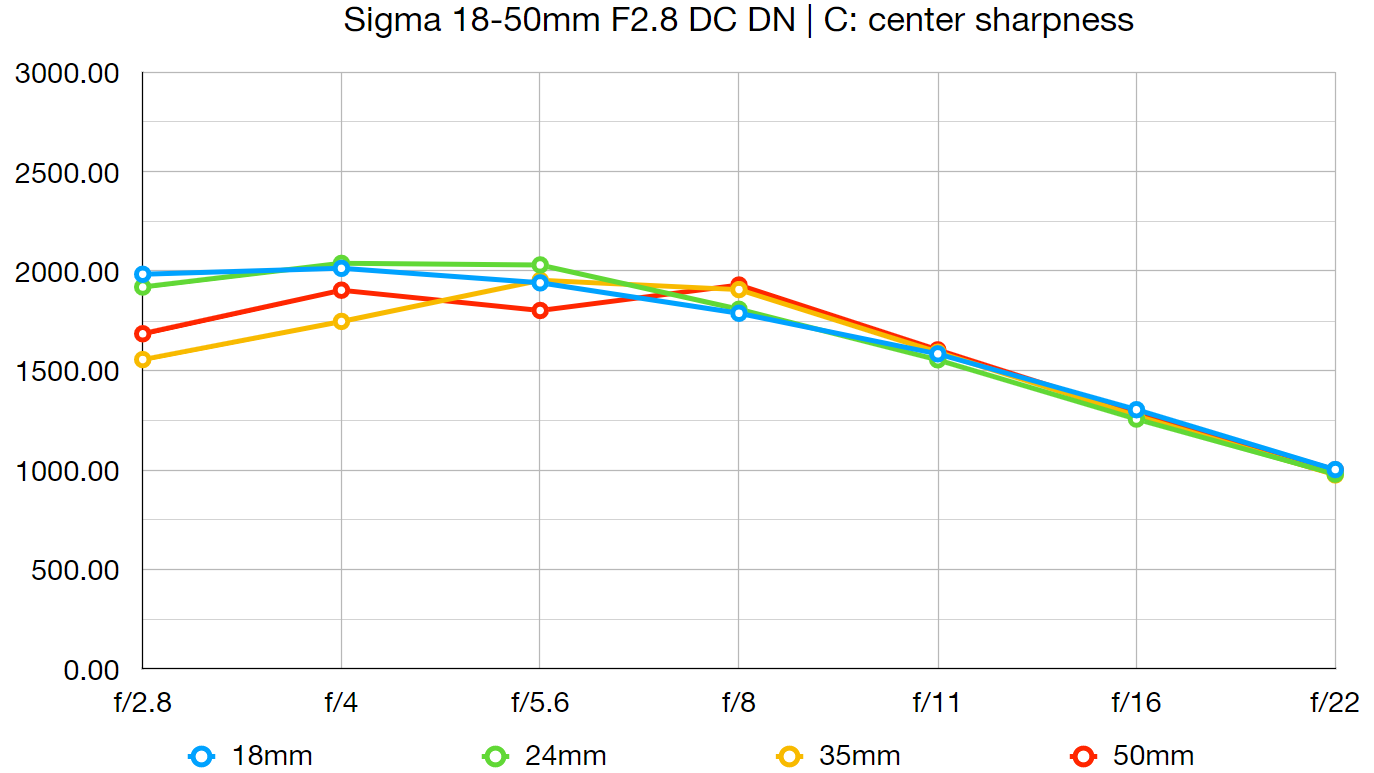
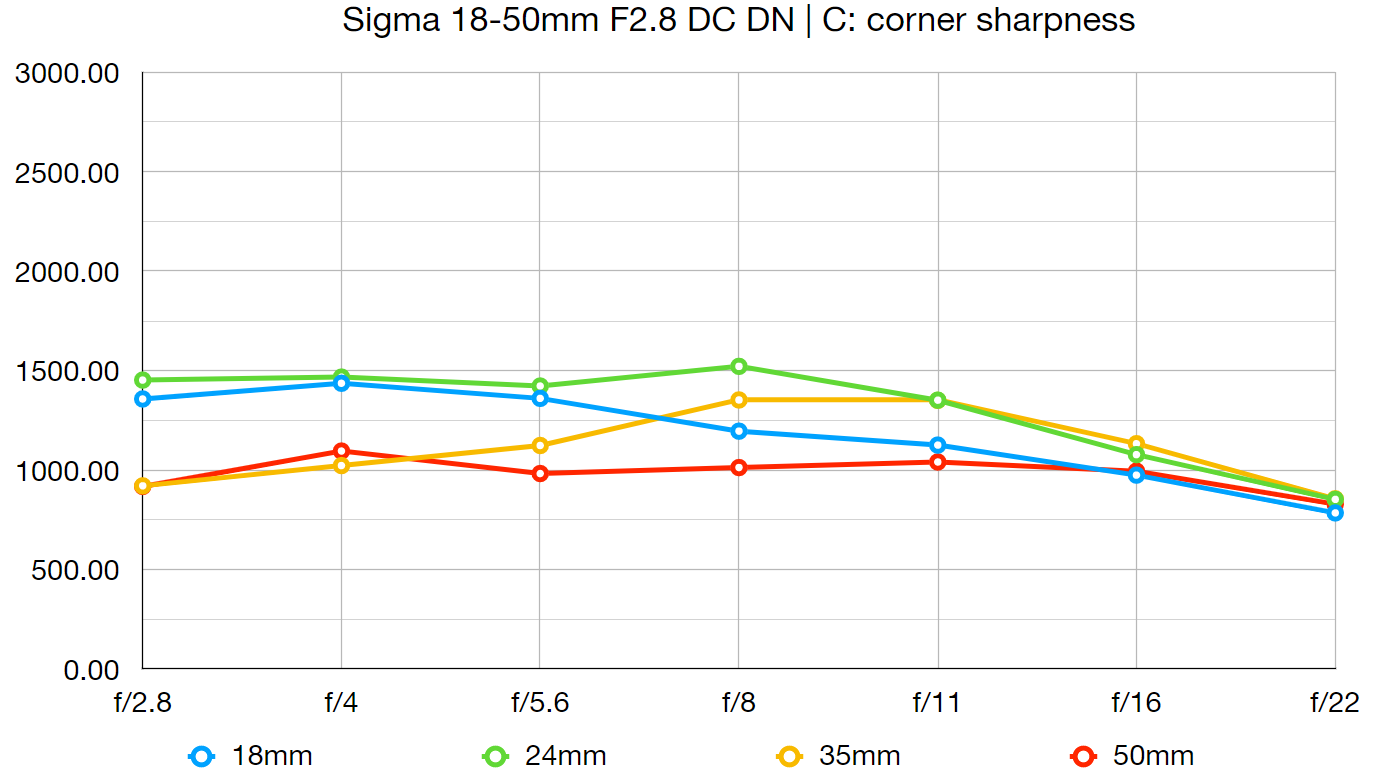
At 18mm, sharpness is excellent across the whole frame, only dropping off towards the edges and corners at f/2.8. Whole-frame sharpness is even better at 24mm, even when shooting wide-open. Center-sharpness remains excellent in the 35-50mm sector of the zoom range, although edge-sharpness drops off a bit.
Fringing:
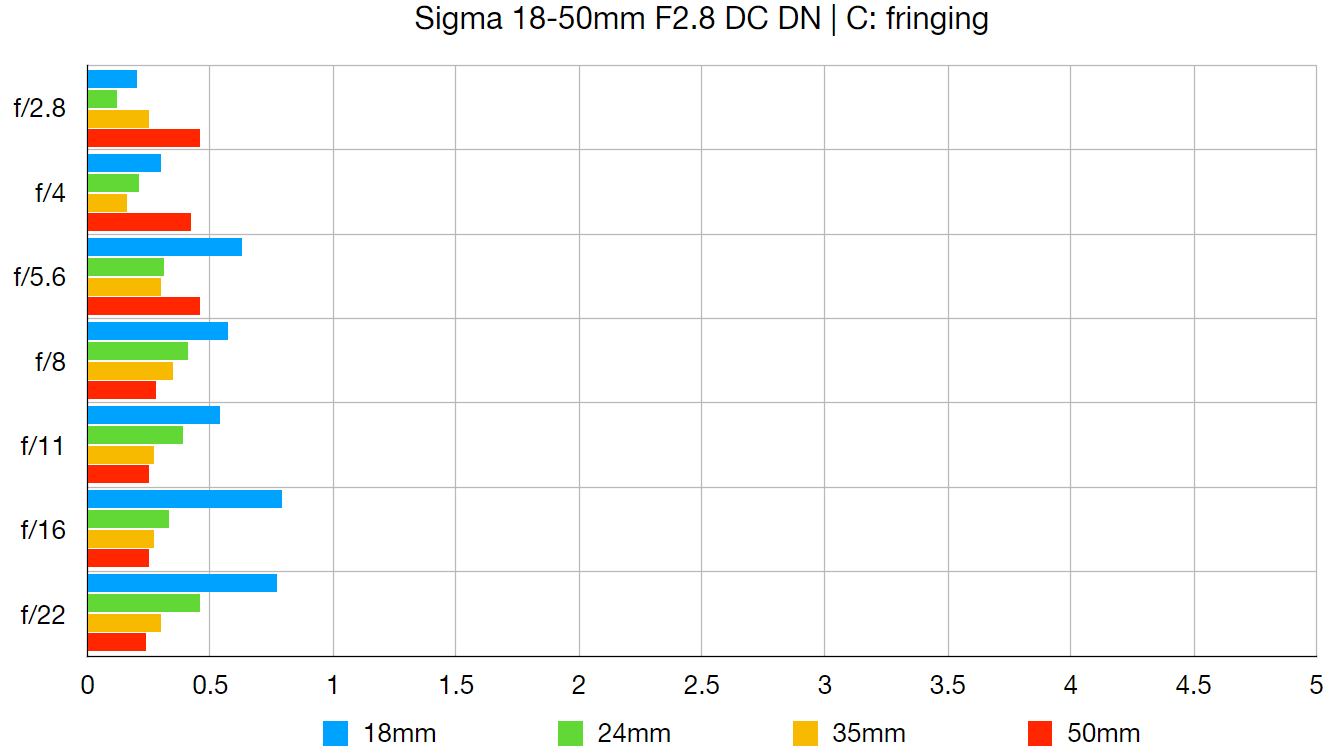
Even with automatic in-camera correction switched off, color fringing is remarkably negligible, throughout the entire zoom range and at all aperture settings.
Distortion:
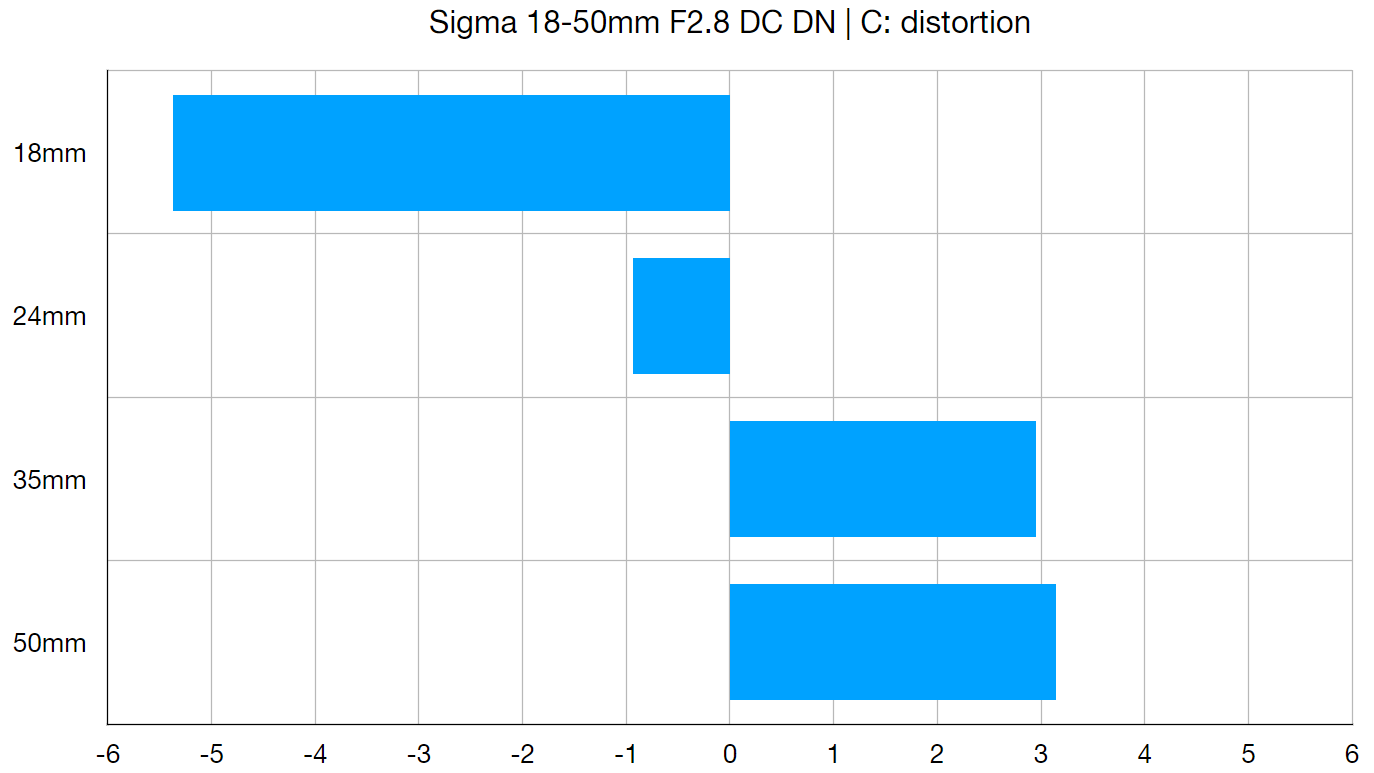
There’s heavy barrel distortion at 18mm and noticeable pincushion in the 35-50mm sector of the zoom range. As we’re seeing more and more with lenses designed for mirrorless bodies, there’s a reliance on in-camera corrections.
Verdict
A big, chunky f/2.8 standard zoom lens would look and feel out of place on a dinky little Sony or Leica APS-C format system body. Sigma solves the problem by shoehorning a useful 27-75mm effective zoom range with a fast and constant f/2.8 aperture into a remarkably compact yet well-built, weather-resistant lens. It has super-fast and virtually silent autofocus, and delivers impressive image quality. At just a quarter of the weight and price of many f/2.8 standard zooms, it’s a great buy. All in all, this Sigma is a little lens that really does punch well above its weight.
Read more:
• Best camera lenses to get
• Best Canon lenses
• Best Nikon lenses
• Best Sony lenses
Matthew Richards is a photographer and journalist who has spent years using and reviewing all manner of photo gear. He is Digital Camera World's principal lens reviewer – and has tested more primes and zooms than most people have had hot dinners!
His expertise with equipment doesn’t end there, though. He is also an encyclopedia when it comes to all manner of cameras, camera holsters and bags, flashguns, tripods and heads, printers, papers and inks, and just about anything imaging-related.
In an earlier life he was a broadcast engineer at the BBC, as well as a former editor of PC Guide.
